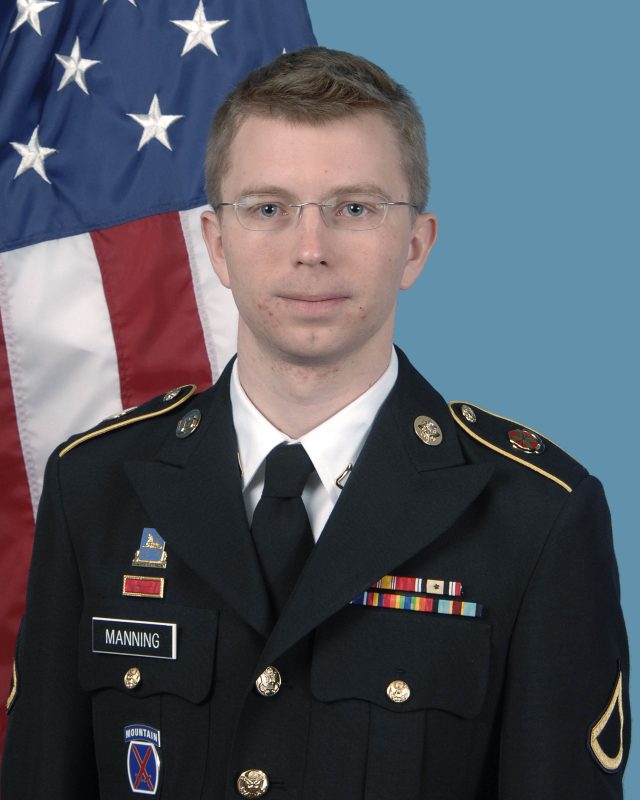Manning, shocked by “the bloodlust,” went with WikiLeaks
Watching soldiers kill "like a child torturing an ant with a magnifying glass."

The Guardian's Ed Pilkington sets the scene:
Manning was flanked by his civilian lawyer, David Coombs, on one side and two military defence lawyers on the other. Wearing full uniform, the soldier read out the document at high speed, occasionally stumbling over the words and at other points laughing at his own comments.The American people had the right to know "the true costs of war," Manning said in court today today. He continued:
"I felt we were risking so much for people who seemed unwilling to cooperate with us, leading to frustration and hatred on both sides. I began to become depressed at the situation we found ourselves mired in year after year." [CBS News]He was particularly upset by video of a 2007 Apache helicopter attack that was ultimately found to have killed civilians and a Reuters journalist. "[T]he bloodlust they seemed to have, they seemed not to value human life," said Manning. "For me that was like a child torturing an ant with a magnifying glass."
"We were obsessed with capturing and killing human targets on lists and ignoring goals and missions. I believed if the public, particularly the American public, could see this it could spark a debate on the military and our foreign policy in general [that] might cause society to reconsider the need to engage in counter-terrorism while ignoring the human situation of the people we engaged with every day." [The Guardian]
Ultimately, Manning decided not to keep the video classified. He uploaded it to WikiLeaks and it spread like wildfire, becoming known as the infamous "collateral murder" video. Manning used Tor anonymizing software to upload the video.
Rebuffed by newspapers, Manning turns to an admired website
That was the first step in what became a deluge of leaked data. After the video went viral, Manning was approached by a WikiLeaks figure named "Ox," whom he assumed to be Julian Assange. Manning gave himself the codename of "Nathaniel Frank," after a character in a novel he'd recently read.First, Manning decided to leak the millions of war documents he had from Iraq and Afghanistan. Remarkably, he actually tried to give them to two leading US newspapers—and was turned away. Manning said a message he left at the New York Times was not returned, and a reporter at The Washington Post didn't take him seriously. He also considered contacting the website Politico, but ultimately didn't approach them because of bad weather conditions.
Spokespeople for the Post and the Times both said today that those newspapers had no knowledge of an attempt by Manning to offer information to them.
At one point during pre-trial motions, prosecutors suggested they would have taken legal action against the Times had they published the information before Wikileaks had. "Publishing information in a newspaper [can] indirectly convey information to the enemy," a military prosecutor told Col. Denise Lind, who is overseeing the case.
Manning ultimately decided to send the documents to Wikileaks. He had become aware of the website in 2009, the same year it released more than 500,000 text messages sent the day of the 9/11 attacks—a move that had impressed him.
The location from which Manning decided to send what he called "the most significant documents of our time"? A Barnes & Noble in suburban Maryland. He saved the files on the memory stick on his camera and uploaded them from the bookstore during his mid-tour leave.
Late in the day, Col. Lind questioned Manning about the seeming contradiction between his justification for his actions and his admission in his guilty plea that he had undermined the "good order and discipline" of the armed forces.
"Regardless of my opinions, it's beyond my pay-grade, it's beyond my authority to make these decisions," Manning replied, according to The Guardian. "There are channels you are supposed to go through. I didn't even look at those channels–that's not how we do business."
Just based on the 10 charges Manning has pled guilty to, he faces up to 20 years in prison. If convicted on additional charges after his June trial, he could receive a life sentence.
No comments:
Post a Comment